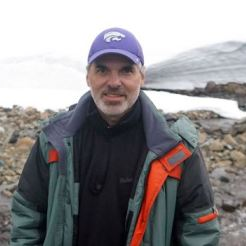Advances in Integrated Watershed Modeling: Emerging Water Issues under Changing Land Use and Climate
A special issue of Hydrology (ISSN 2306-5338). This special issue belongs to the section "Hydrological and Hydrodynamic Processes and Modelling".
Deadline for manuscript submissions: closed (31 March 2019) | Viewed by 42648
Special Issue Editors
Interests: soil erosion; ephemeral gully erosion; watershed modeling; climate change impacts; hydrology
Special Issues, Collections and Topics in MDPI journals
Interests: water resources engineering; environmental assessment; optimization; uncertainty analysis; watershed modeling
Interests: watershed hydrology; land use/cover change impacts; wetland hydrology; green infrastructure; nutrient cycling in wetlands
Special Issues, Collections and Topics in MDPI journals
Special Issue Information
Dear Colleagues,
Systematic approach to modeling watershed systems involves a holistic integration of hydrologic and water-quality processes with data collection and model optimization. Recent advances in the understanding of physical and biogeochemical processes and novel computer technologies have brought significant attention to watershed modeling technologies and their associated applications, such as lake contamination by harmful algal blooms in the Great Lakes region in North America, excessive soil erosion and stream sedimentation in Loess Plateau of Northern China, and water scarcity in many watersheds in Africa. These emerging issues require an integrated modeling approach to support watershed management. The strength of this inter-disciplinary approach lies in abilities to achieve challenging goals associated with cross-surface (surface to subsurface to deeper ground), cross-scale (plot to hillslope to watershed), cross-temporal (event to annual to multidecades), or cross-spatial (course to high resolution) subjects. For this Special Issue, we invite submissions from different disciplines that present latest advances in the development of watershed modeling systems, integration of hydrologic and nutrient transport processes to solve emerging water quantity and quality problems, evaluating watershed model performance under different spatial and temporal data constrains, and predicting the impacts of land use/land cover and climate change with the use of computer models.
Dr. Aleksey Y. SheshukovDr. Haw Yen
Dr. Latif Kalin
Dr. Laurent Ahiablame
Guest Editors
Manuscript Submission Information
Manuscripts should be submitted online at www.mdpi.com by registering and logging in to this website. Once you are registered, click here to go to the submission form. Manuscripts can be submitted until the deadline. All submissions that pass pre-check are peer-reviewed. Accepted papers will be published continuously in the journal (as soon as accepted) and will be listed together on the special issue website. Research articles, review articles as well as short communications are invited. For planned papers, a title and short abstract (about 100 words) can be sent to the Editorial Office for announcement on this website.
Submitted manuscripts should not have been published previously, nor be under consideration for publication elsewhere (except conference proceedings papers). All manuscripts are thoroughly refereed through a single-blind peer-review process. A guide for authors and other relevant information for submission of manuscripts is available on the Instructions for Authors page. Hydrology is an international peer-reviewed open access monthly journal published by MDPI.
Please visit the Instructions for Authors page before submitting a manuscript. The Article Processing Charge (APC) for publication in this open access journal is 1800 CHF (Swiss Francs). Submitted papers should be well formatted and use good English. Authors may use MDPI's English editing service prior to publication or during author revisions.
Keywords
- Hydrological modeling
- Surface and subsurface hydrology
- Nutrient transport processes at watershed scales
- Watershed sustainability research
- Conservation and best management practices
- Hotspot (source and critical area) identification
- Land use and climate change impacts
- Mathematical and computer-aided modeling






